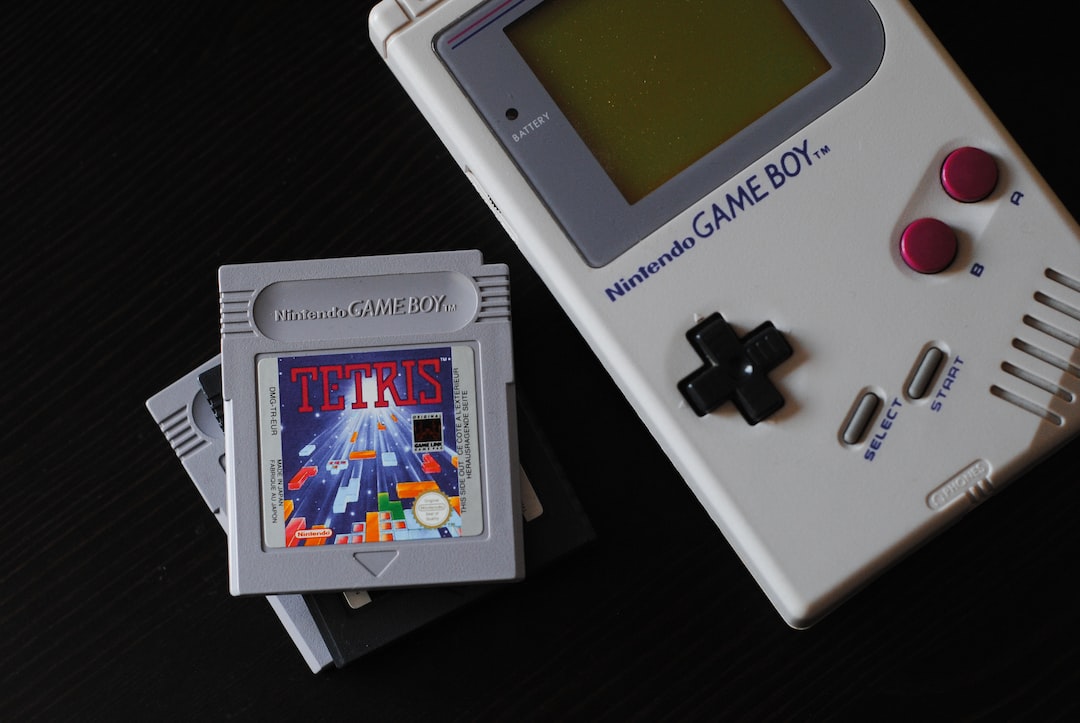Video game design is a fascinating field that combines art and technology to create immersive and interactive experiences for players. It is the process of designing the visual and interactive elements of a video game, including the characters, environments, gameplay mechanics, and overall user experience. Video game design requires a unique blend of creativity, technical skills, and problem-solving abilities.
Key Takeaways
- Video game design is a combination of art and technology.
- Video game design has evolved from Pong to modern games.
- Technology plays a crucial role in video game design, including graphics, sound, and gameplay.
- The creative process of video game design involves conceptualization to execution.
- Storytelling is important in video game design to create engaging narratives.
The Evolution of Video Game Design
Video game design has come a long way since the early days of Pong. In the 1970s, video games were simple and consisted of basic graphics and gameplay mechanics. However, as technology advanced, so did video game design. The introduction of home consoles like the Atari 2600 in the late 1970s allowed for more complex games with better graphics and sound.
The 1980s saw the rise of arcade games like Pac-Man and Donkey Kong, which pushed the boundaries of video game design even further. These games featured more detailed graphics and introduced new gameplay mechanics that captivated players around the world.
The 1990s marked a significant milestone in video game design with the introduction of 3D graphics. Games like Super Mario 64 and Tomb Raider revolutionized the industry by offering immersive 3D environments that players could explore. This era also saw the birth of iconic franchises like The Legend of Zelda and Final Fantasy, which showcased the potential for storytelling in video games.
In recent years, video game design has continued to evolve with advancements in technology. The introduction of high-definition graphics, virtual reality, and augmented reality has opened up new possibilities for designers to create even more immersive and realistic experiences for players.
The Role of Technology in Video Game Design
Technology plays a crucial role in video game design. It provides designers with the tools and resources they need to bring their creative visions to life. Graphics, sound, and gameplay are all important aspects of video game design that rely heavily on technology.
Graphics are a key component of video game design as they help create the visual world that players interact with. Advancements in graphics technology have allowed for more realistic and detailed environments, characters, and special effects. From pixelated sprites to lifelike 3D models, graphics have come a long way in enhancing the overall visual experience of video games.
Sound is another important aspect of video game design that helps create an immersive and engaging experience for players. From background music to sound effects, audio cues play a crucial role in setting the mood and enhancing the gameplay. Technology has allowed for more sophisticated sound design, with high-quality recordings and realistic audio effects.
Gameplay is the heart of any video game, and technology has played a significant role in shaping how games are played. From simple button inputs to complex motion controls, technology has allowed for more intuitive and interactive gameplay mechanics. The rise of mobile gaming has also introduced touch-based controls, which have opened up new possibilities for game design.
The Creative Process of Video Game Design
| Stage | Description | Metrics |
|---|---|---|
| Concept | Developing the game idea | Target audience, game genre, game mechanics |
| Pre-Production | Planning and research | Game design document, storyboards, game engine selection |
| Production | Creating game assets and programming | Number of levels, character models, lines of code |
| Testing | Quality assurance and bug fixing | Bug reports, playtesting feedback, time spent testing |
| Release | Launching the game | Number of downloads, sales revenue, critical reception |
Video game design is a highly creative process that involves several steps from conceptualization to execution. The first step in the creative process is coming up with an idea or concept for the game. This involves brainstorming ideas, researching market trends, and identifying target audiences.
Once the concept is established, the next step is to create a design document that outlines the game’s mechanics, characters, environments, and overall vision. This document serves as a blueprint for the development team and helps ensure that everyone is on the same page.
After the design document is complete, the next step is to create a prototype or demo of the game. This allows designers to test out different gameplay mechanics and get feedback from players. Iteration is an essential part of the creative process, as it allows designers to refine their ideas and make improvements based on user feedback.
Once the prototype is finalized, the next step is to start the production phase. This involves creating the assets, programming the game mechanics, and integrating all the elements together. Collaboration is crucial during this phase, as designers, artists, programmers, and sound engineers work together to bring the game to life.
Testing and quality assurance are also important steps in the creative process. This involves identifying and fixing any bugs or issues that may arise during gameplay. Once the game is polished and ready for release, it is time to launch it to the public and gather feedback from players.
The Importance of Storytelling in Video Game Design
Storytelling is a crucial aspect of video game design as it helps create a compelling narrative that engages players. A well-crafted story can immerse players in the game world and make them feel emotionally connected to the characters and events.
There are several ways in which video game designers can create engaging narratives. One approach is through cutscenes, which are pre-rendered or real-time sequences that advance the story. Cutscenes can be used to introduce characters, provide backstory, or showcase important events in the game.
Another approach is through in-game dialogue and interactions. By giving players choices and branching paths, designers can create a sense of agency and allow players to shape the story based on their decisions. This adds replay value to the game and encourages players to explore different outcomes.
Environmental storytelling is another technique used in video game design. By carefully crafting the environments and placing clues or hints throughout the game world, designers can tell a story without relying on explicit dialogue or cutscenes. This allows players to discover the narrative at their own pace and adds depth to the overall experience.
Designing Characters in Video Games

Designing characters is a crucial part of video game design as they are often the main focal point of the game. Characters help drive the narrative, provide gameplay mechanics, and create an emotional connection with players.
The process of designing characters involves a combination of technology and creativity. Technology allows designers to create detailed 3D models, realistic animations, and lifelike facial expressions. This level of detail helps bring characters to life and makes them more relatable to players.
Creativity is also essential in character design, as it involves coming up with unique and memorable designs that stand out from the crowd. Designers must consider factors such as the character’s personality, backstory, and role in the game when creating their visual appearance.
Character design also involves creating gameplay mechanics that are unique to each character. This includes their abilities, strengths, weaknesses, and how they interact with the game world. Balancing these mechanics is crucial to ensure that each character is fun to play and contributes to the overall gameplay experience.
The Impact of User Experience in Video Game Design
User experience (UX) is a critical aspect of video game design as it determines how players interact with the game and how enjoyable the overall experience is. A well-designed user experience can make a game more immersive, intuitive, and engaging.
There are several ways in which video game designers can create an immersive user experience. One approach is through level design, which involves creating interesting and challenging environments for players to explore. By carefully crafting the layout, pacing, and difficulty of levels, designers can create a sense of progression and keep players engaged.
Another aspect of user experience is the user interface (UI), which includes menus, HUDs (heads-up displays), and other on-screen elements. A well-designed UI should be intuitive, easy to navigate, and provide relevant information to the player without being overwhelming or distracting.
Gameplay mechanics also play a crucial role in user experience. By creating mechanics that are easy to learn but difficult to master, designers can create a sense of satisfaction and reward for players. Balancing the difficulty curve is important to ensure that players are constantly challenged but not frustrated.
Balancing Technology and Creativity in Video Game Design
Balancing technology and creativity is one of the biggest challenges in video game design. On one hand, technology provides designers with the tools and resources they need to bring their creative visions to life. On the other hand, relying too heavily on technology can stifle creativity and lead to generic or uninspired games.
Finding the perfect blend between technology and creativity is crucial to creating innovative and engaging video games. Designers must stay up-to-date with the latest technological advancements while also pushing the boundaries of what is possible creatively.
One way to balance technology and creativity is through experimentation. By trying out new tools, techniques, and technologies, designers can discover new ways of creating unique and memorable experiences for players. This involves taking risks and being open to failure, as not every experiment will be successful.
Collaboration is also important in balancing technology and creativity. By working with a diverse team of designers, artists, programmers, and sound engineers, different perspectives can be brought to the table. This allows for a more holistic approach to game design and ensures that all aspects of the game are considered.
The Future of Video Game Design
The future of video game design is filled with exciting possibilities. Advancements in technology such as virtual reality, augmented reality, and artificial intelligence are shaping the future of video games and opening up new creative possibilities.
Virtual reality (VR) allows players to immerse themselves in a virtual world and interact with it using specialized headsets and controllers. This technology has the potential to revolutionize video game design by creating even more immersive and realistic experiences.
Augmented reality (AR) combines virtual elements with the real world, allowing players to interact with virtual objects in their physical environment. This technology has already been used in games like Pokemon Go, but its potential for more complex and interactive experiences is still being explored.
Artificial intelligence (AI) is another area of technology that is shaping the future of video game design. AI can be used to create more realistic and intelligent non-player characters (NPCs), improve enemy AI, and create dynamic and adaptive gameplay experiences.
Careers in Video Game Design
There are a variety of career opportunities available in video game design for those interested in pursuing a career in the industry. Some of the most common roles include game designer, level designer, character artist, animator, sound designer, and programmer.
To succeed in the industry, aspiring video game designers should have a combination of technical skills and creative abilities. A strong understanding of programming languages, 3D modeling software, and game engines is essential. Additionally, having a passion for gaming and a deep understanding of what makes a game fun and engaging is crucial.
Video game design is a unique field that combines art and technology to create immersive and interactive experiences for players. It has evolved significantly over the years, thanks to advancements in technology. Graphics, sound, and gameplay are all important aspects of video game design that rely heavily on technology.
The creative process of video game design involves several steps from conceptualization to execution. Collaboration and iteration are key to creating successful games. Storytelling, character design, user experience, and balancing technology and creativity are all important aspects of video game design.
The future of video game design is filled with exciting possibilities, thanks to advancements in technology such as virtual reality, augmented reality, and artificial intelligence. There are also a variety of career opportunities available in the industry for those interested in pursuing a career in video game design. Overall, video game design is a dynamic and ever-evolving field that continues to push the boundaries of what is possible in interactive entertainment.
If you’re interested in exploring the intersection of technology and creativity in the world of video game design, you might also enjoy reading an article on SEONerf titled “The Role of SEO in Video Game Marketing.” This insightful piece delves into how search engine optimization (SEO) strategies can be leveraged to enhance the visibility and success of video games in an increasingly competitive market. Check it out here!
FAQs
What is video game design?
Video game design is the process of creating the content and rules of a video game, including its storyline, characters, gameplay mechanics, and visual and audio elements.
What skills are required for video game design?
Video game design requires a combination of technical and creative skills, including programming, graphic design, storytelling, game mechanics, and user experience design.
What is the role of technology in video game design?
Technology plays a crucial role in video game design, as it enables designers to create increasingly complex and immersive games. This includes game engines, graphics software, and programming languages.
What is the creative process for video game design?
The creative process for video game design typically involves brainstorming and concept development, prototyping and testing, iteration and refinement, and final production and release.
What are some examples of successful video game designs?
Some examples of successful video game designs include Super Mario Bros., The Legend of Zelda, Minecraft, Fortnite, and Grand Theft Auto. These games have achieved critical and commercial success due to their engaging gameplay, memorable characters, and innovative design elements.
What are some challenges faced by video game designers?
Video game designers face a range of challenges, including technical limitations, budget constraints, changing market trends, and the need to balance creativity with commercial viability. Additionally, designing games that appeal to diverse audiences and meet ethical and social standards can be a complex task.






